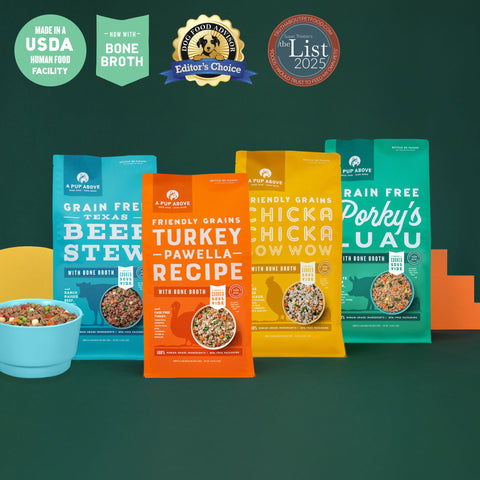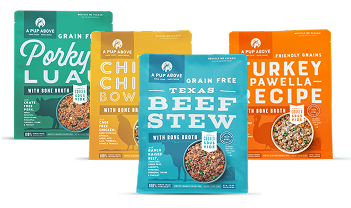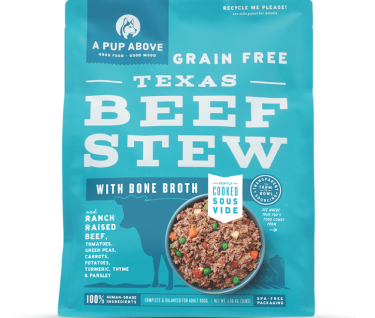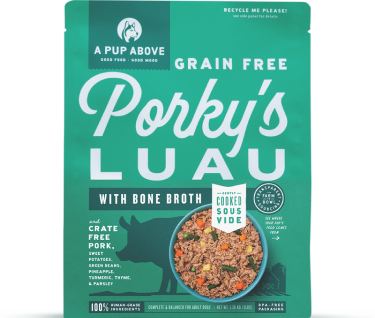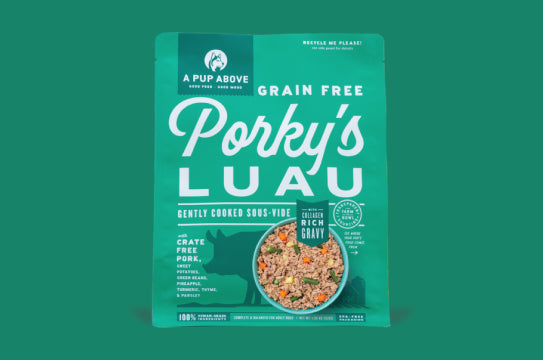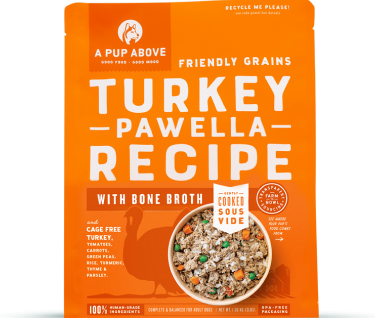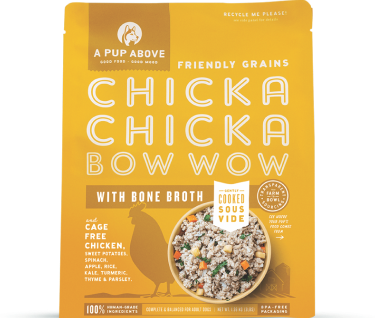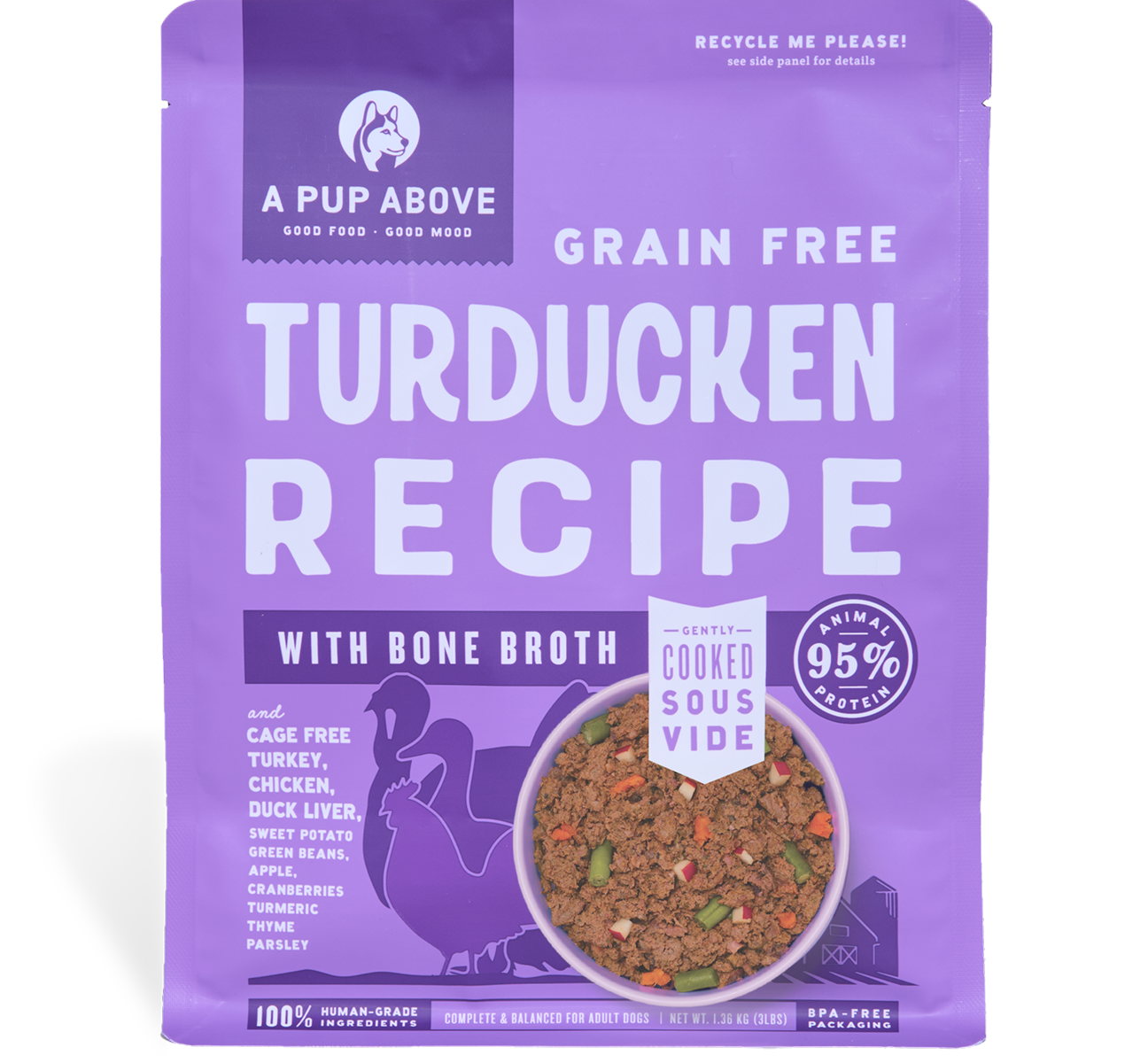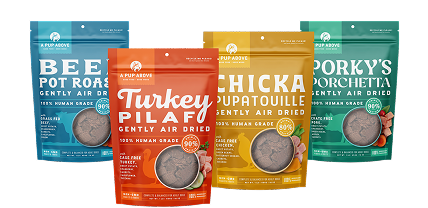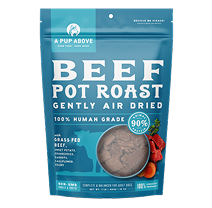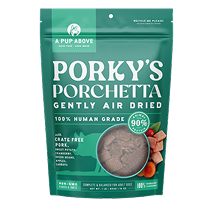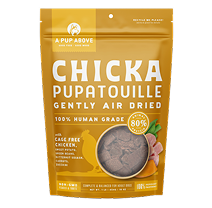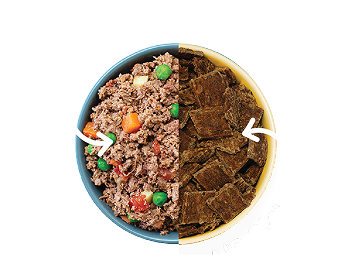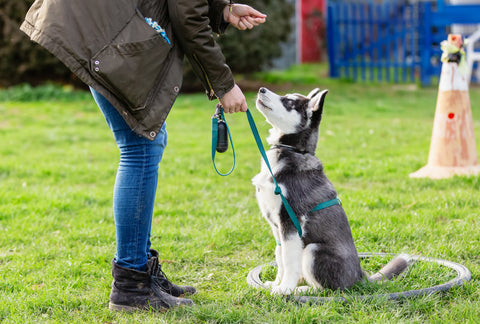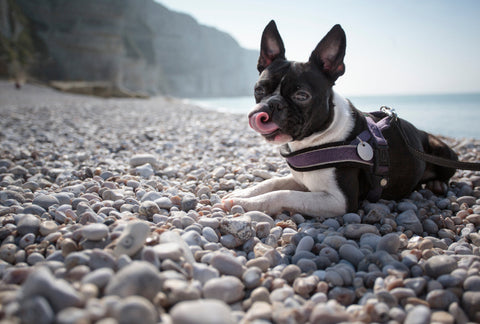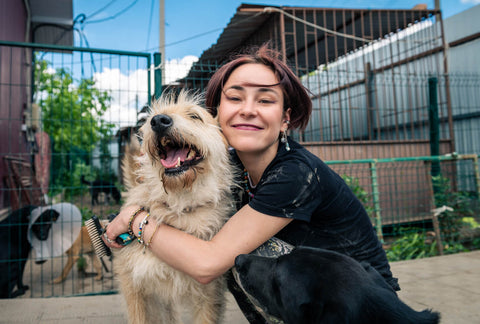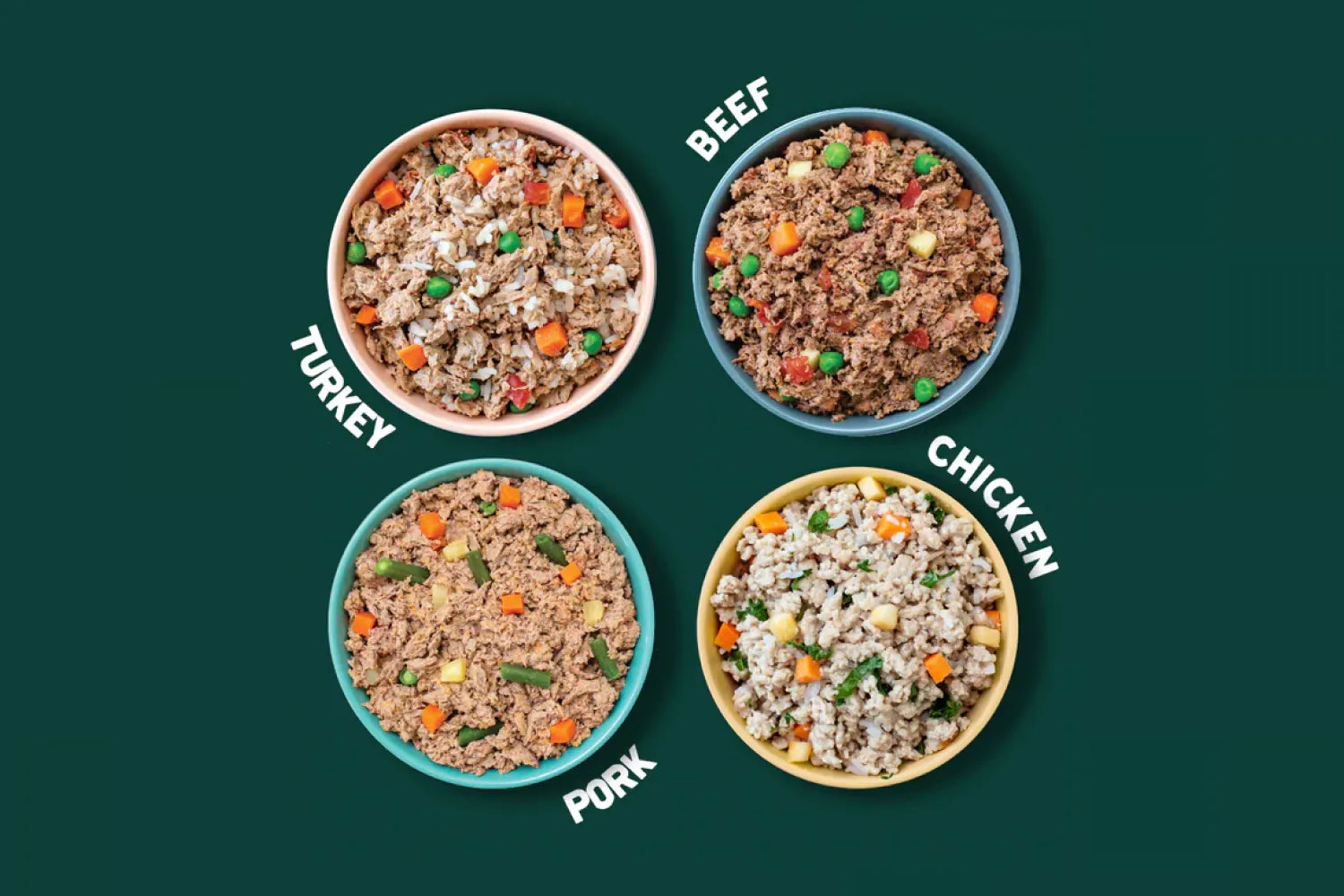
Is Fresh Dog Food Better Than Kibble?
At A Pup Above, we get it — kibble’s been the default forever. It’s what most of us grew up feeding our dogs without really questioning it. Scoop it, pour it, done. But at some point, you start to wonder: is this stuff actually good for them? Or is it just convenient?
That’s why we’re talking about it. In this article, we’re digging into the fresh food vs. kibble debate. Not to shame your pantry or turn this into some weird food war. Just honest info, so you can feed your pup with a little more confidence and a lot less guesswork.
What Are the Benefits of Feeding Your Dog Fresh Food?
Let’s start with fresh dog food — is it actually worth the hype, or just another trend designed to make you spend more time reading labels than your dog spends chewing their toys?
There are plenty of reasons pet parents are making the switch — here are some of them:
More of the Good Stuff, Less of the “Wait, What’s That?”
One of the biggest benefits of fresh food is that you can tell what it is. Like, really tell. Meat that looks like meat. Veggies you recognize. Ingredients you don’t have to Google.
And what you don’t see? Meat by-products, filler grains, or weird preservatives with names that sound like they belong in car wax. When you feed fresh, you're giving your dog nutrients straight from whole foods — not stuff made in a lab and sprayed on after.
Better Digestion (And Better Poops)
This might not be glamorous, but it matters: digestion. When dogs eat highly processed food, their systems work overtime to break it down. That can lead to inconsistent poops, stomach mayhem, and you standing in the yard at 2 a.m. with regrets.
Fresh food skips the heavy processing and keeps its natural moisture, which makes it easier on your dog’s stomach. The result? More regular digestion, less gassiness, and firmer, easier-to-pick-up poops. It’s a win for their gut and your nose.
Shinier Coats, Happier Skin
Dull coat? Itchy skin? Constant scratching? Fresh food may help support your dog’s skin and coat from the inside out.
That’s because fresh meals are often packed with naturally occurring vitamins, minerals, and healthy fats that help maintain healthy skin and promote a softer, shinier coat. We’re talking about real food that feeds the body — not synthetic sprays or topical bandaids. When the inside’s running better, the outside tends to follow.
Maintains Muscle and Joint Function
Dogs need protein for more than just energy — it’s key for maintaining strong muscles and supporting joint function, especially as they age. And guess what fresh food is packed with? Real animal protein. Not “protein meal.” Not “flavoring.” Just the real stuff.
Some recipes also include ingredients like sweet potatoes or turmeric that help support mobility without needing to make big, flashy promises. It’s food doing what food is supposed to do: help your dog stay active, strong, and ready for anything.
A Win for Picky Eaters
You know the look. That “meh, I’ll pass” face your dog gives when you serve up the same old thing. Some dogs eat anything, sure — but others have taste buds and opinions.
Fresh food smells and tastes like actual food, which can be a game-changer for dogs who turn their noses up at kibble. And when they actually want to eat what’s in the bowl, you get mealtime without the begging, bribing, or hand-feeding drama.
Potential Health Risks of Feeding Your Dog Kibble
Ah, kibble. It’s easy, it’s cheap, it lasts forever — and it’s what most of us have been feeding our dogs for years without thinking twice. But when you start digging into what it actually is and how it’s made, things get a little murky.
The reality is that kibble goes through some intense processing. We’re talking high heat, pressure, and then a nutrient spray-down to try and make up for everything lost along the way.
That kind of process can be tough on your dog’s body long term — especially when it’s the only thing they eat every single day. And since most kibble is made to sit on shelves for months (or even years), that usually means preservatives, flavor boosters, and other stuff you probably wouldn’t want in your own dinner, let alone theirs.
Another thing? It’s hard to know what you’re really getting. Ingredient lists are often vague on purpose.
“Meat meal,” “animal by-product,” “natural flavor” — it’s a lot of code words for things that probably aren’t as great as they sound. And if your dog has a sensitive stomach, mystery meat and shelf-stable fillers aren’t doing them any favors.
None of this is to say kibble is poison — it’s just not perfect. And if you’ve ever had a nagging feeling that something about it feels a little off? You’re not imagining it. There are better options out there — and knowing what goes into that scoop can help you figure out what works best for your dog.
How Much Food Should I Be Feeding My Dog?
Wondering if you’re feeding your dog too much? Not enough? You’re not the only one. Figuring out the right amount of food can feel a little confusing, but it doesn’t have to be.
The amount your dog needs depends mostly on their weight and activity level. Puppies usually need more. Older dogs usually need less. And if your pup is more of a napper than a sprinter, that plays a part, too.
To keep things simple, here’s a quick guide:
Mixing fresh food and kibble? Easy — just reduce the dry food a little to make room for the fresh. For example, if your dog normally eats 2 cups of kibble, try 1 cup of kibble and ¾–1 cup of fresh food and adjust from there.
And of course, if your pup’s weight or energy levels are changing, or you're just not sure where to start, your vet is always a good resource.
Using Fresh Food as a Topper for Kibble
Not ready to make the full switch to fresh food? That’s totally fine. Maybe your dog’s doing okay on their current food. Maybe you’ve still got half a bag of kibble to get through. Maybe the idea of committing to something new just feels like a lot. We get it.
That’s why using fresh food as a topper is such an easy win. You don’t have to overhaul your whole routine — you’re just adding a scoop of something real to what your dog’s already eating. It’s a simple way to add flavor, moisture, and nutrients to their bowl, especially if they’ve been a little meh about mealtime lately.
Not sure where to start? Try mixing in a little Turkey Pawella or Porky’s Luau — both made with gently cooked meat, non-GMO veggies, and bone broth. They smell like actual food (because they are), and chances are, your dog will notice the upgrade immediately.
You can go half-and-half, just a spoonful, or whatever makes sense for you. There’s no wrong way to top — just better ingredients, happier pups, and cleaner bowls.
Fresh Dog Food vs. Air-Dried Dog Food
We’ve talked about kibble, covered toppers, and figured out how much to feed — but what exactly is air-dried dog food, and how does it stack up?
Air-dried food is made by slowly removing moisture at low temps to help preserve nutrients. It’s definitely a step up from heavily processed kibble, and it usually has fewer fillers and more whole ingredients. It’s also shelf-stable, which is super convenient.
That said, air-dried food is still dry — so it doesn’t offer the same hydration or texture benefits you get from fresh food. With fresh, gently cooked meals like ours, you get moisture, flavor, and ingredients you can see: real chunks of meat, non-GMO veggies like sweet potatoes and spinach, and nutrient-rich bone broth in every recipe.
Bottom line? Air-dried is great if you’re on the go. But if you’re looking for something that feels closer to home-cooked — something that looks and smells like food and makes your dog actually excited to eat — fresh might just hit different.
Conclusion
So, is fresh dog food better than kibble? If you ask us — yep. It’s food that looks like food, smells like food, and comes packed with the good stuff: gently cooked meat, non-GMO veggies, and bone broth your pup will 100% notice.
At A Pup Above, we’re all about making it easier to feed your dog like family — whether you're ready to go fully fresh or just want to start with a scoop.
Ready to upgrade their bowl? Check out our fresh recipes here — your pup will thank you with tail wags (and maybe even a clean plate dance).
Sources:
Fresh vs Raw Dog Food vs Kibble: Which Diet Is Best For Your Dog? | AKC
Extrusion Processing Modifications of a Dog Kibble | PMC
Protein | Dog health | The Kennel Club
Dog Nutrition: What & How Much To Feed My Dog | American Kennel Club
Top Stories

Why Do Dogs Lick Their Paws?

Why Do Dogs Whimper & Make Noises in Their Sleep?
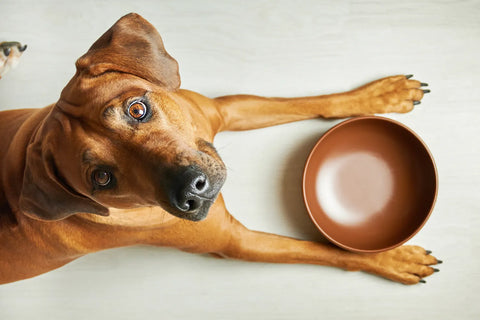
Healthy Vet-Approved Homemade Dog Food Recipes
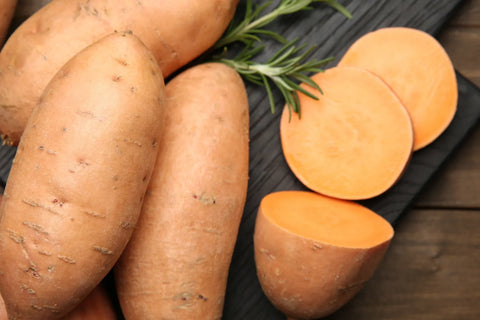
How To Cook Sweet Potatoes for Dogs
